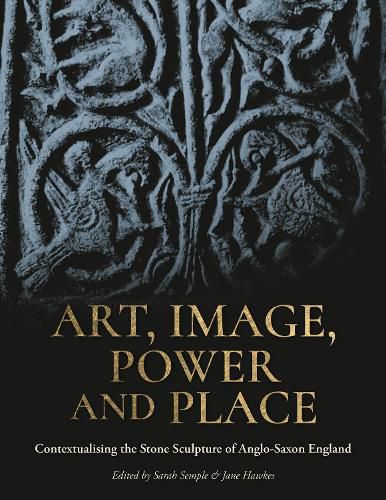Art, Image, Power and Place: Contextualising the Stone Sculpture of Anglo-Saxon England

Art, Image, Power and Place: Contextualising the Stone Sculpture of Anglo-Saxon England
Early medieval stone sculptures survive across Europe: at waysides, in architectural settings and in churches and graveyards, and provide an exceptional source for understanding the aesthetics and beliefs of early medieval communities. England is no exception to this. Thousands of intact and fragmentary stone monuments survive from the seventh to eleventh centuries CE, evidencing the emergence of a rich Anglo-Saxon sculptural tradition in stone. These often elaborately carved monuments that were generally painted
some with considerable sophistication
and could be inset with paste glass and metal, provide clear evidence of a rich and new form of visual material culture connected with the Church in the region. Some monuments acted as liturgical markers, others as markers of working relations between secular and ecclesiastical communities, while others still commemorated the dead, and some fragments demonstrate the ways in which stone buildings were decorated both inside and out. By the tenth century, stone crosses and monuments were frequently commissioned by the Anglo-Saxon and Anglo-Scandinavian secular elites, demonstrating strong connections between sculptural commemoration, power, and identity. For decades, the celebrated project, the Corpus of Anglo-Saxon Stone Sculpture, has provided information on these monuments, cataloguing each example in terms of date, geology, and decoration. This multi-authored volume draws on the expertise of many specialists connected with the Corpus to provide a first accessible national overview of the resource. Thematic chapters reflect on discoveries to date and archaeological and art historical approaches to researching and understanding sculpture. Key themes include quarrying and production, chronology, the intellectual and artistic context for sculpture, aesthetics and iconography, and the places and contexts of sculpture use. This extensively illustrated volume introduces Anglo-Saxon sculpture in its broader European context and offers a stepping-off point for all those wanting to learn more and research these often-enigmatic fragments. SELLING POINTS: Sarah Semple is Professor in Archaeology at Durham University. Her research interests range from early medieval funerary archaeology to monuments and buildings as well as sculpture and particularly understanding the landscape context and sensory impacts of monuments. She recently co-published A Cultural History of Medieval Objects in the Medieval Age. Jane Hawkes is Professor in the History of Art at the University of York. She has published widely on all aspects of late antique and early medieval art and architecture, but specialises in the early medieval sculpture of Britain and Ireland, with a particular focus on that of Anglo-Saxon England.
Order online and we’ll ship when available
Our stock data is updated periodically, and availability may change throughout the day for in-demand items. Please call the relevant shop for the most current stock information. Prices are subject to change without notice.
Sign in or become a Readings Member to add this title to a wishlist.

